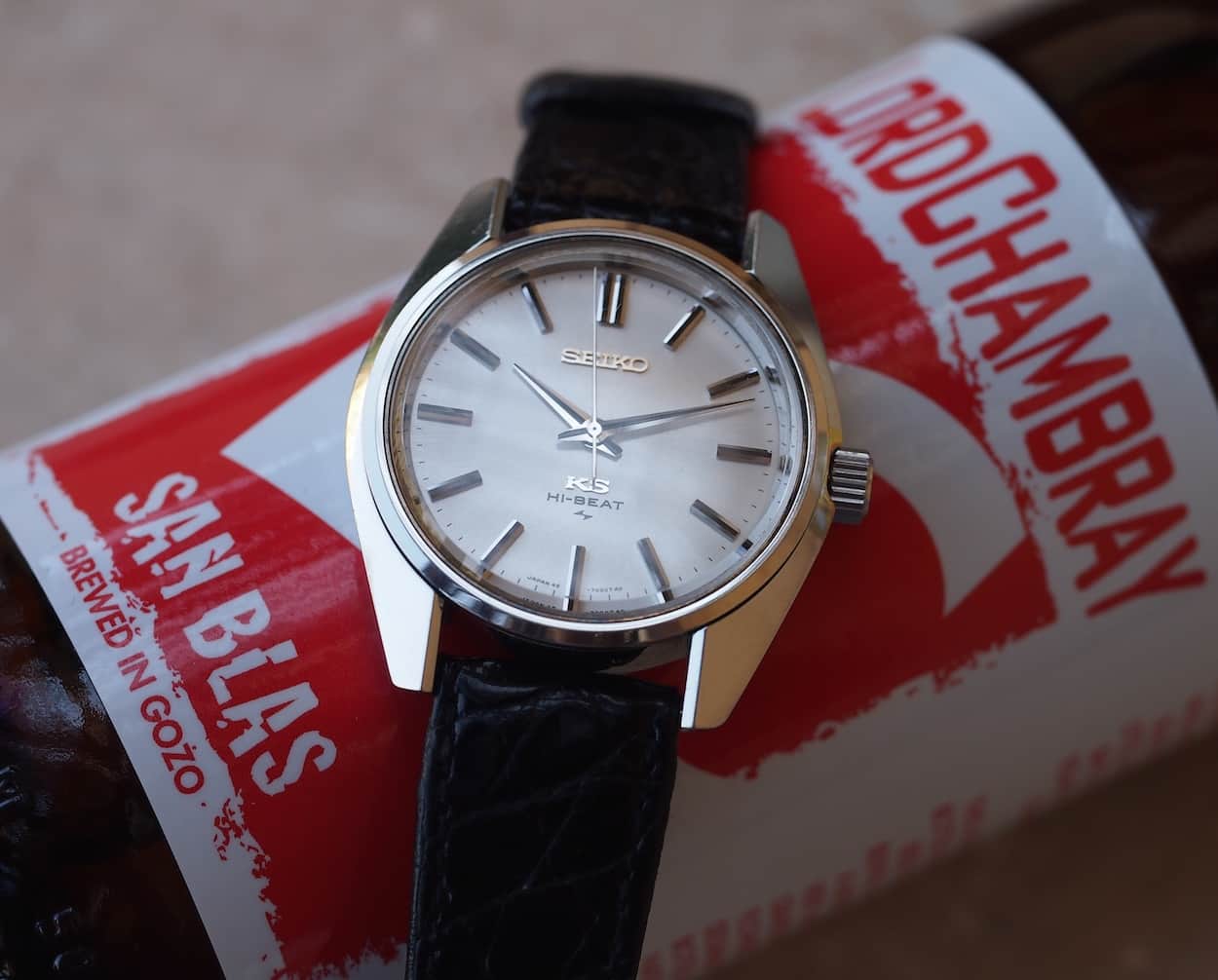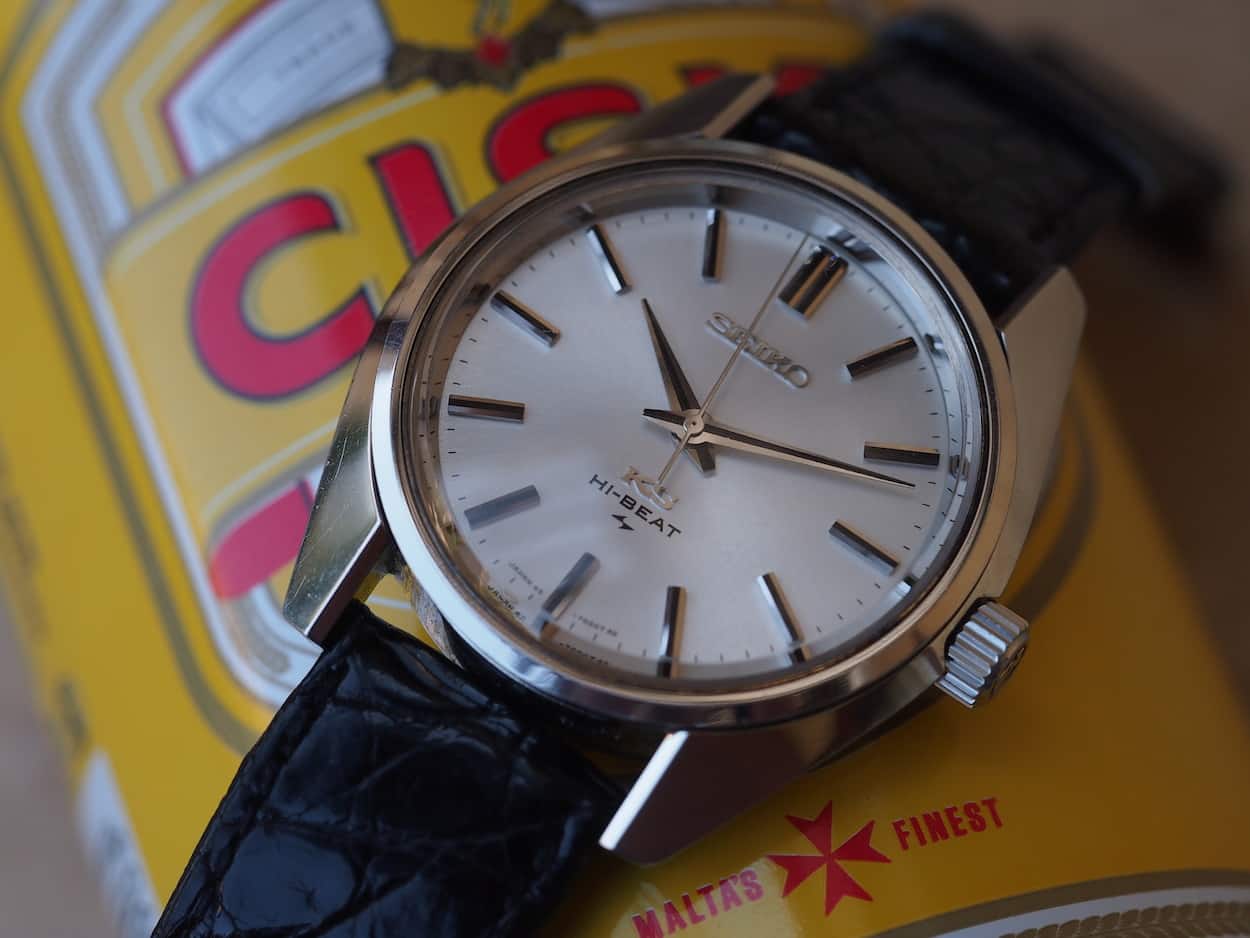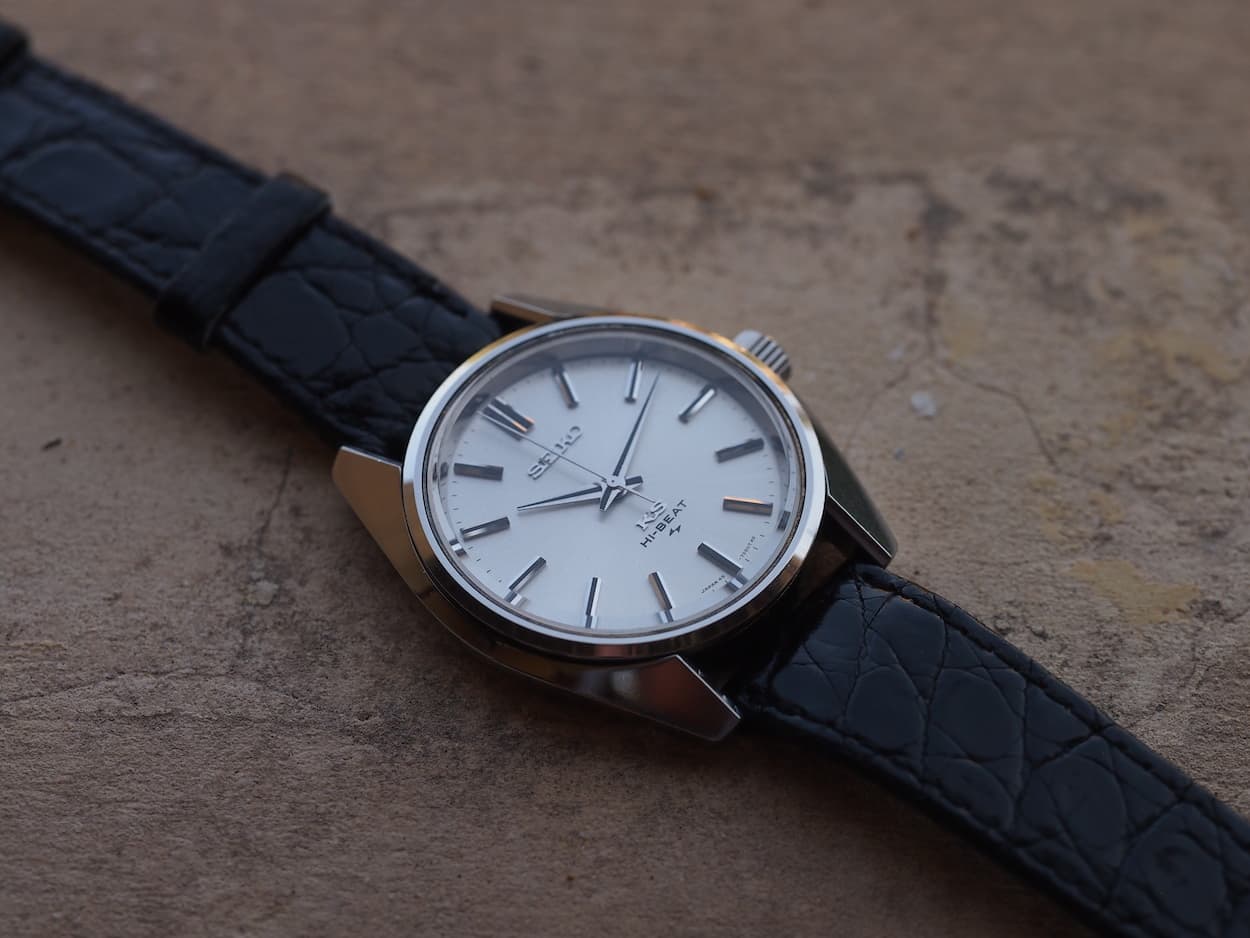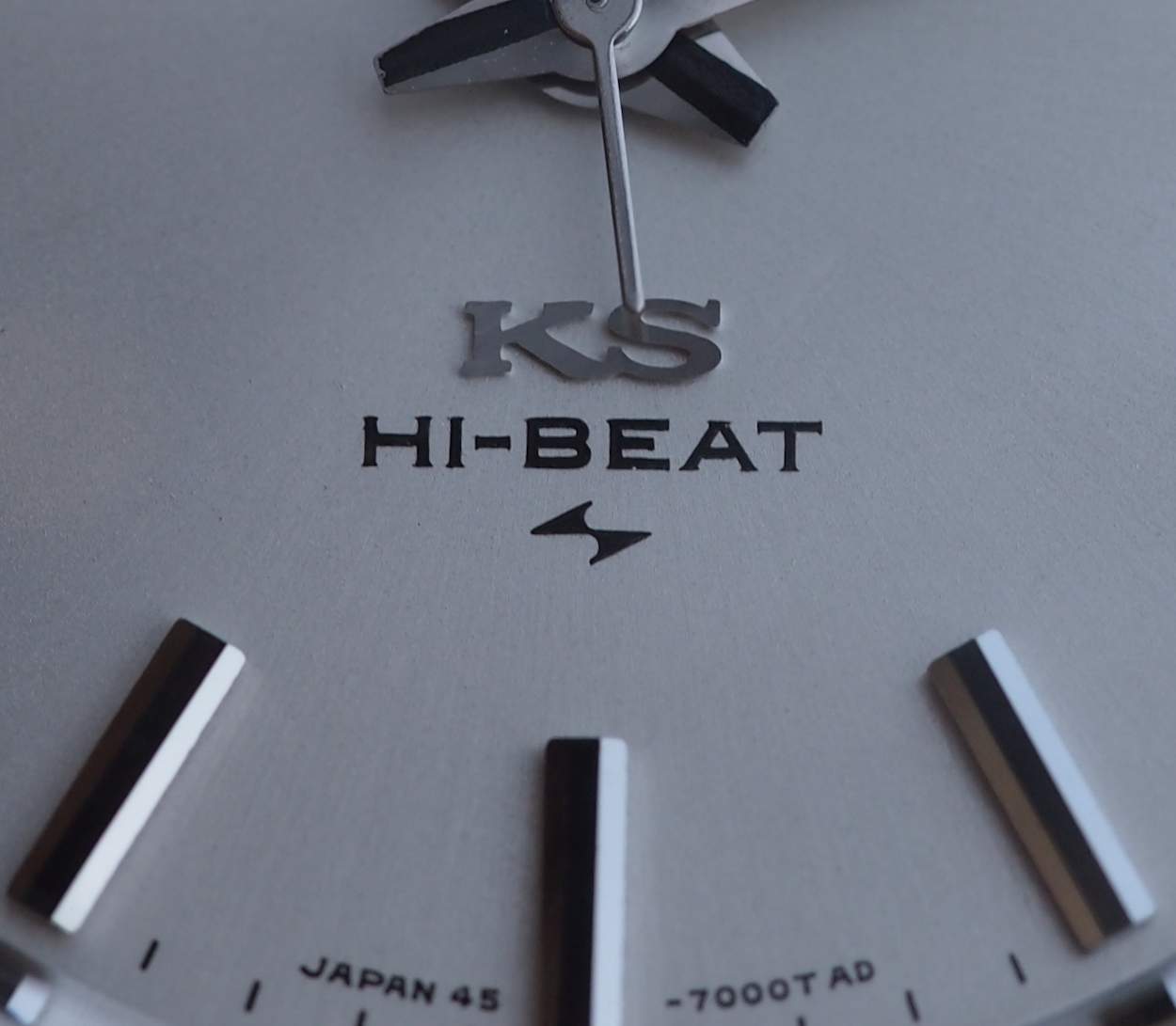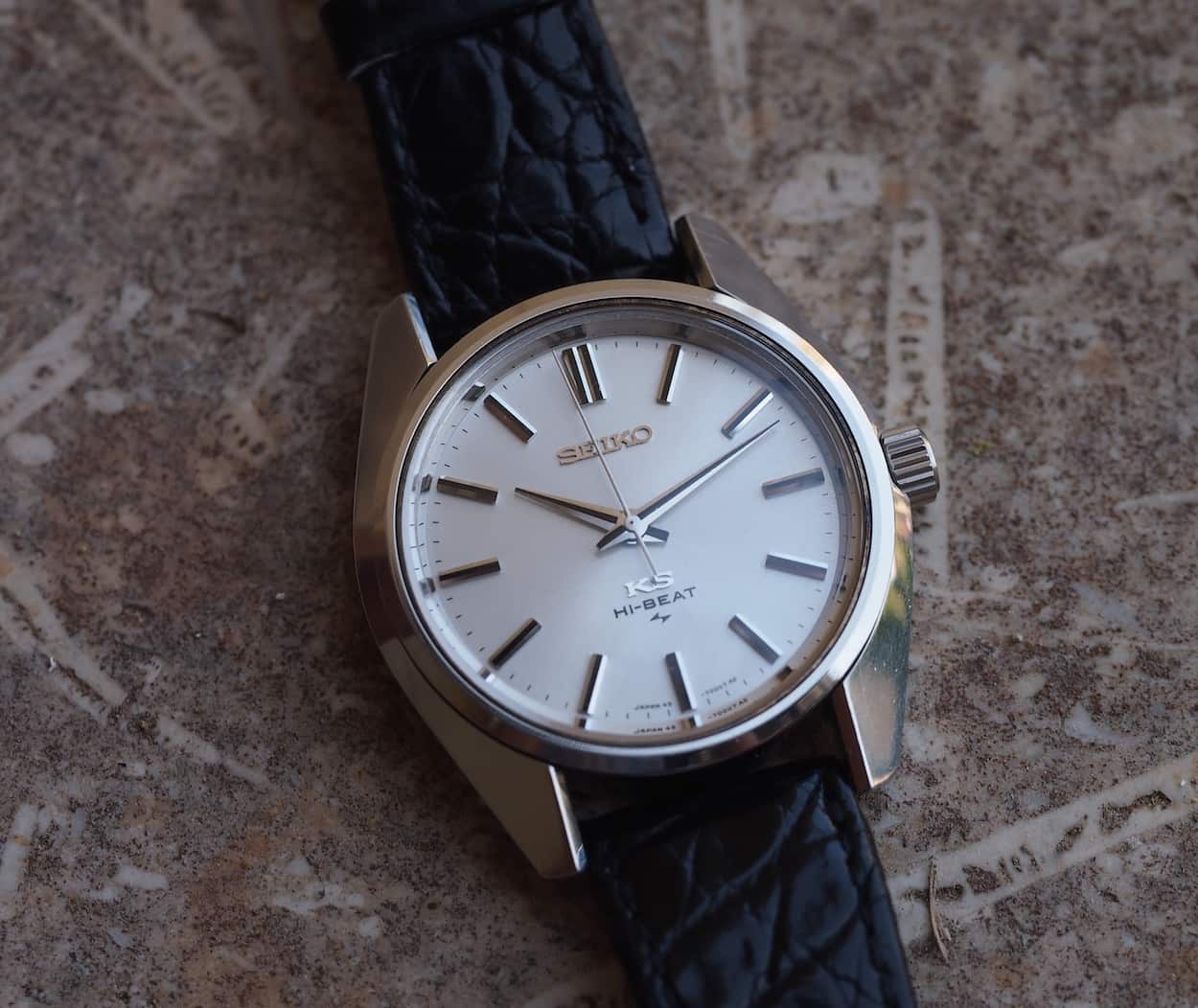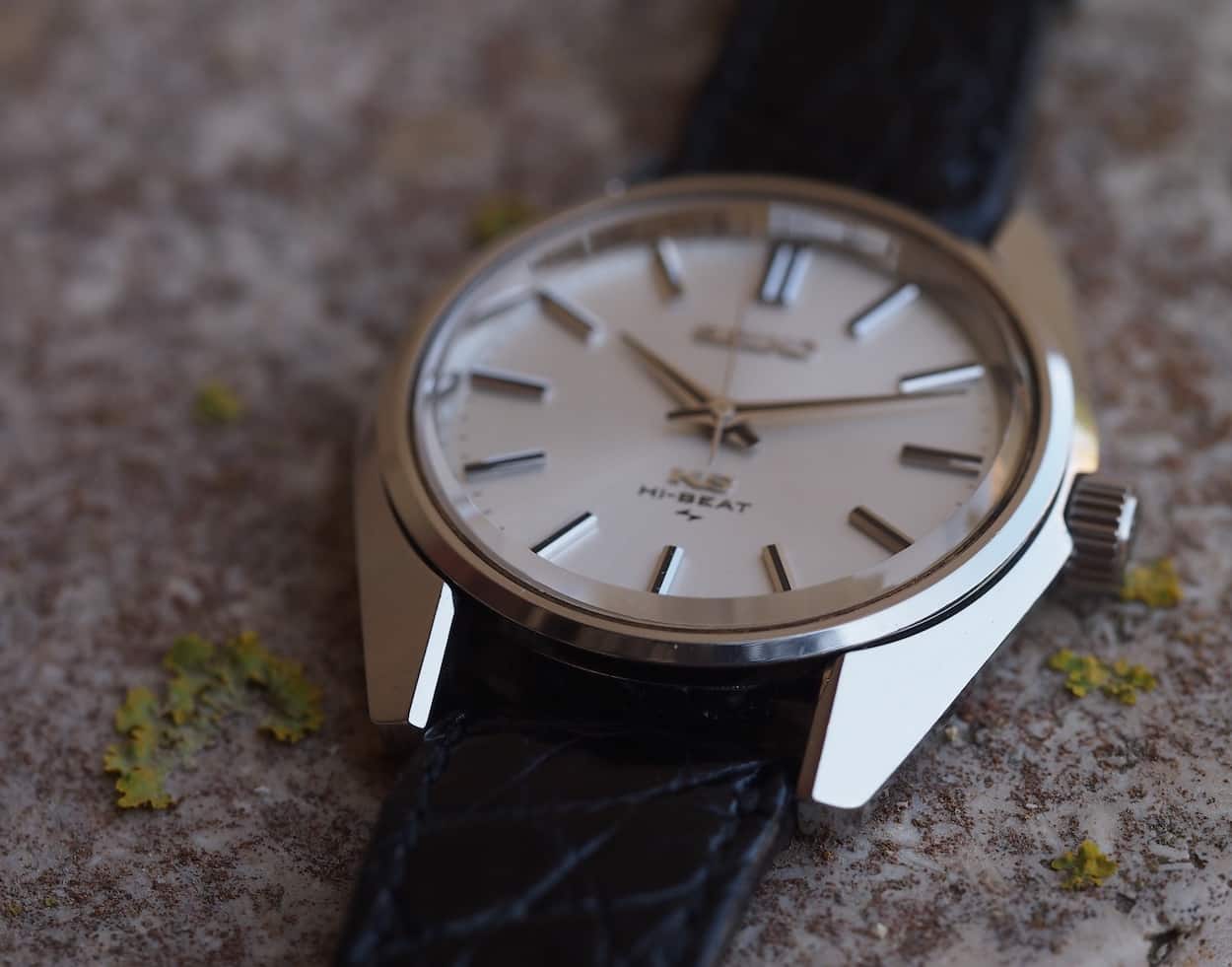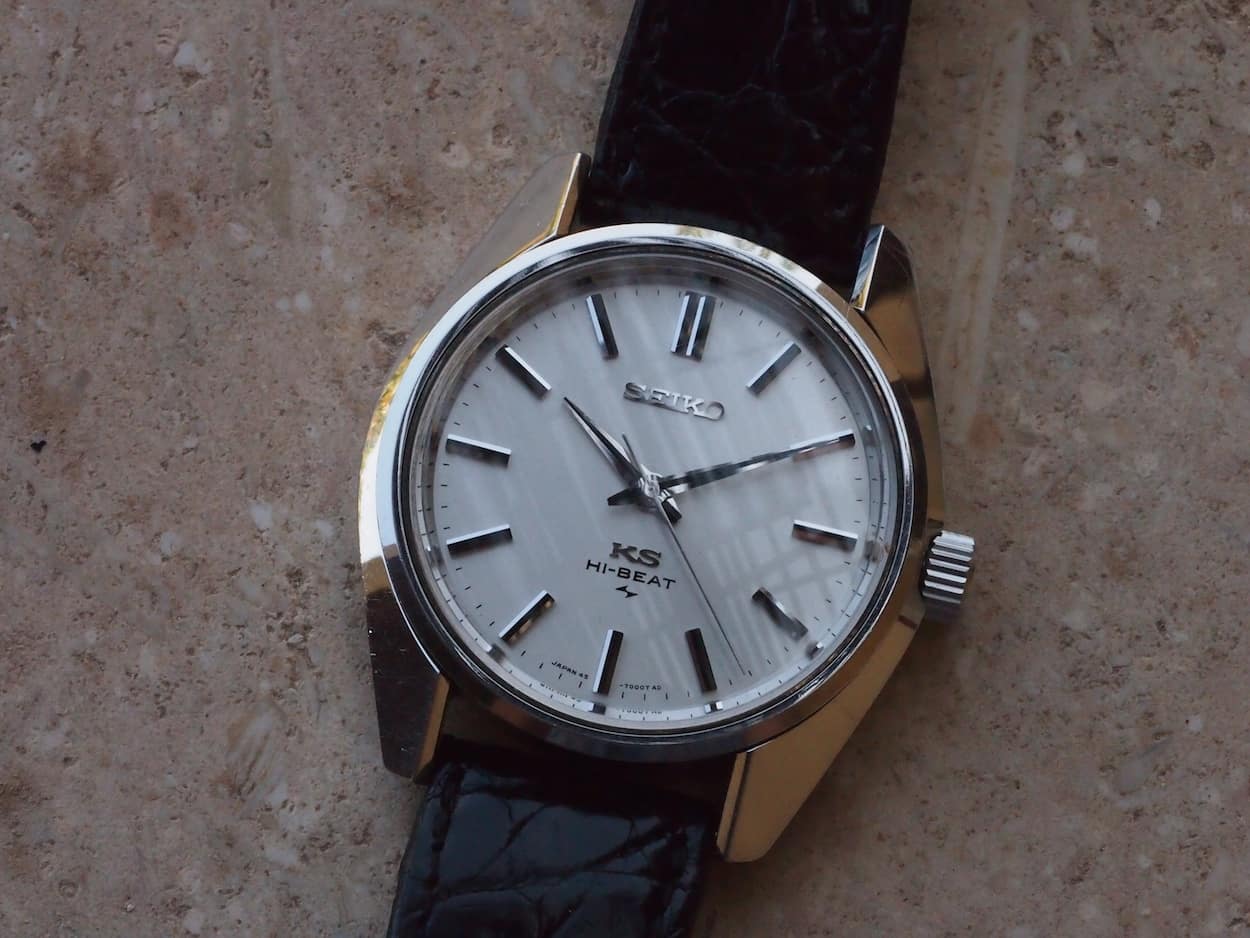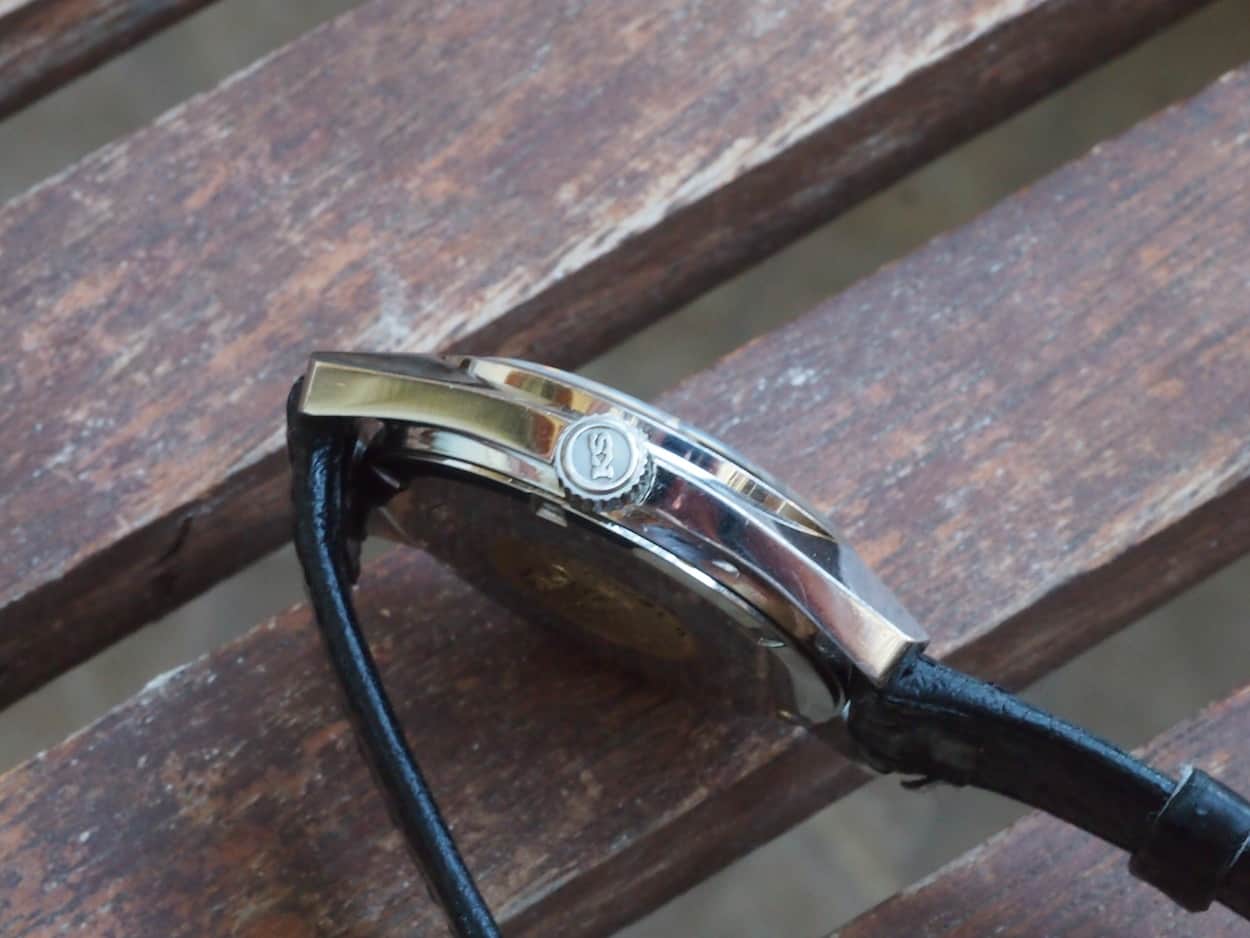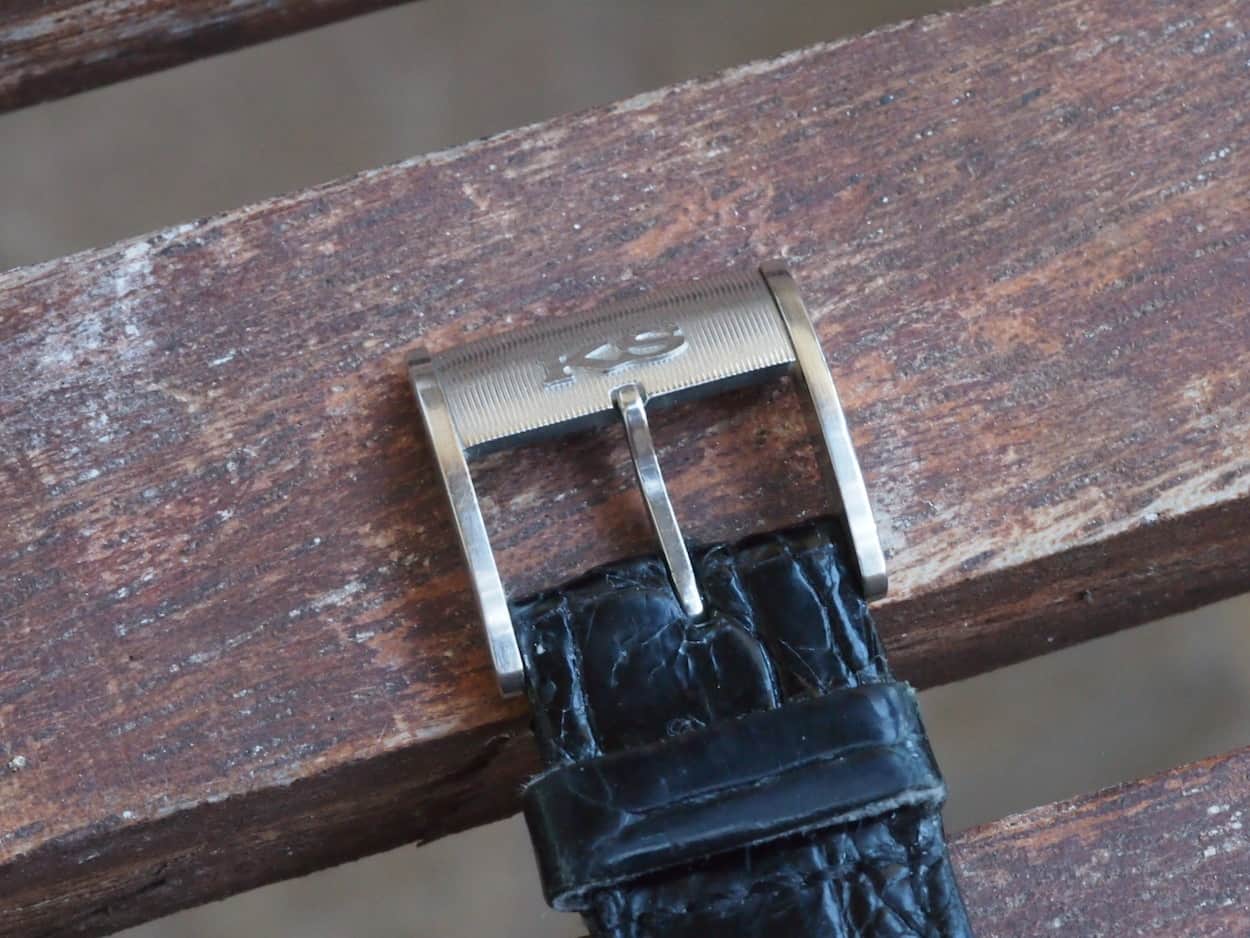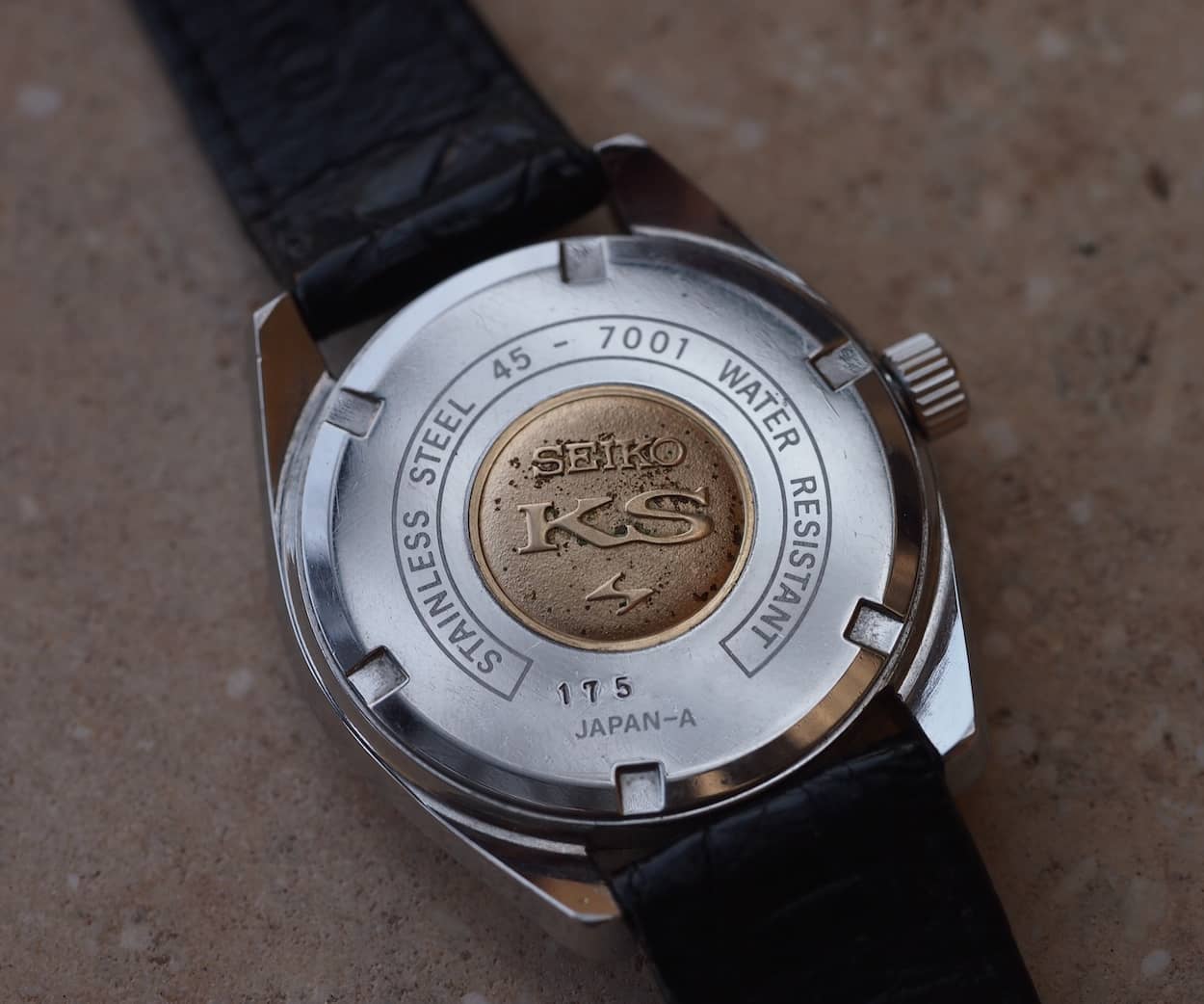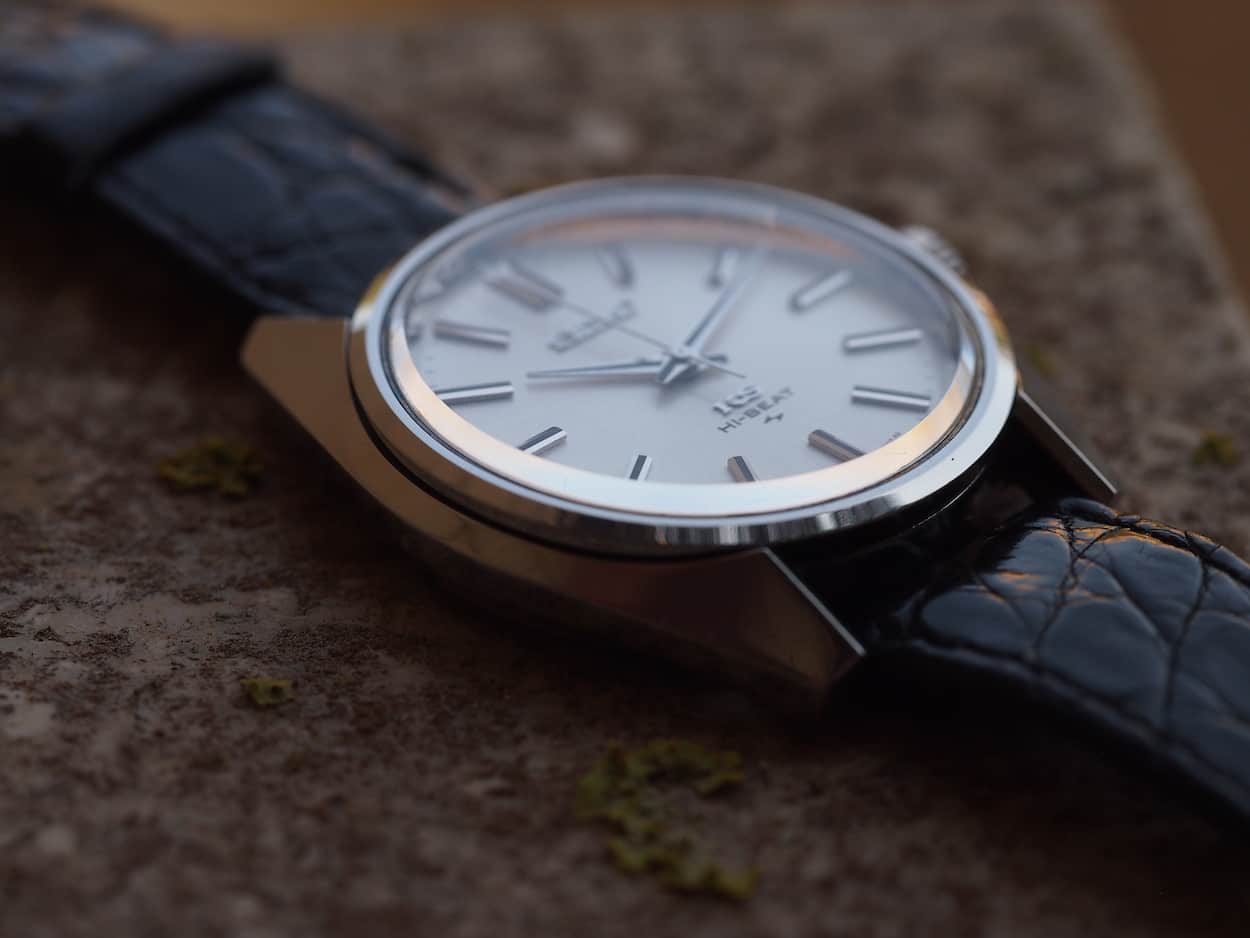#TBT King Seiko 45-7001
In today’s #TBT, we step away from a fairly long run of sport watches, either from the diving or chronograph persuasion. That leaves us to explore the previously unknown: the dress watch. I actually like dress watches of the simplest kind…two to three hands maximum, but with enough distinction to make them stand out from the crowd. For certain, simplicity can be a tough thing to master, but today’s featured Seiko does it with ease. The other notable attribute about today’s piece, and a prime reason behind its acquisition, is its movement. #TBT comes to you from the island of Gozo with the King Seiko 45-7001.
Yes, I am writing this poolside, which really makes the subject of today’s article a little odd, as Malta is far more suited for dive watches. Still, though, writing a thought-provoking article on a three-handed watch can be a difficult chore and this place gives one plenty of time to relax and think about what to say. Oh, and there are some nice opportunities for background shots as well. So, let’s get into it…
I bought the King Seiko featured here today about a year ago from a member on the SCWF. Honestly, I’d just picked up the Grand Seiko I discussed earlier this year as well as a Lord Marvel 36000 in Japan and this felt like a good piece to round out a trio of Seiko dress pieces. Plus, I’d done some reading on King Seiko and the information I’d picked up seemed almost too good to be true. King Seiko, not to be confused with Grand Seiko, was really a competitor to Grand Seiko in every way. Grand Seiko was produced in the Suwa (first) factory and the Daini (second) factory while King Seiko’s were built solely in the Daini (second) plant. We’ve mentioned it before in our Sport Diver article that the two plants really competed under the umbrella of the Seiko Company. In today’s era of penny-pinching, at any manufacturing company, it seems nuts that so much unique tooling was created at each plant, but we, as collectors, now reap the rewards.
The story loosely goes that King Seikos were made to an extremely high standard but were not generally tested or adjusted to COSC standards like Grand Seikos. Some later KS’, such as the Special, did receive COSC certifications, but our piece today did not. Still, many of the mechanicals were similar. In fact, the movement in today’s piece, Seiko’s 4500 movement, was found in some amazing Grand Seiko’s such as the 45GS (modified) and was actually developed by Daini to compete with the Grand Seikos being made by its Suwa counterpart. (Here’s some more info if you’re interested.) Of course, the other nice thing about every individual Seiko model, King or Grand, is that each received its own case design and dial.
Regarding the movement in the King Seiko 45-7001, it’s a high beat (hi-beat in Seiko speak), 36000bph, hand-wound, hacking, unit that features a sweep second hand and goes without a date. It has 25 jewels and was the last hand-built King Seiko movement. Production lasted from 1968 to 1974. Ironically, the introduction of Seiko’s own Astron, the first quartz watch, in 1969, ultimately caused the decline in production of such high-frequency movements.
If we step away, for a moment, let’s think about a hi-beat movement and why it was such an interesting attribute. In the mid-’60s watch companies continued to focus on precision timing and, with this, the ability to measure time in smaller and smaller increments. Girard Perregaux struck first with their model in 1966 and Seiko soon followed in 1967 (albeit in the Lord Marvel I mentioned above). Physically, the speed at which a mechanical movement oscillates limits its ability to measure time in smaller and smaller increments. Furthermore, if designed correctly, the high beat movements can be adjusted towards greater accuracy. In some ways, think of the drive towards 36000 as a bit of an asymptotic race towards the higher frequencies that ultimately landed us in the uber accurate realm of quartz (but…at an astounding 32000 beats per second!). Back to the mechanical side, 36000bph equals 10 beats per second, which is why the Zenith A386 is able to measure with 1/10 of a second accuracy.
If you’ve never held or wound a hi-beat, I advise you to do so. While the 6159 Tuna we reviewed has an automatic hi-beat movement, and it’s very nice, a hand-wound piece is a more pleasing, and affordable, method of scratching this horological itch. Several healthy revolutions of the magnificently signed “KS” crown, it takes some winding to get this horse going, and the King comes to life. Then, visually, you are treated to an almost mesmerizing show as the sweep hand glides around the dial with nearly imperceptible ticking. It’s kind of like an automatic…but not. Then, place the watch to your ear and one is treated to the mechanical version of a Gatling gun; it’s really something. I own the Lord Marvel and the effect is similarly wonderful, but the King Seiko executes at a much higher level due to its finishing.
Regarding finishing, the King Seiko delivers on a level often seen on watches costing multiples more. Also, while we make excuses for some of our most treasured vintage watches related to patina, aging, and the like, the Seiko 45-7000 possesses a quality that would be acceptable today: it’s just that well made. The stainless case comes in at 36mm but it wears a touch smaller which is likely due to its 18mm lug width and the fact that, unlike the 45GS, it doesn’t contain any metal above the strap ends except for the rounded case. Compare it to the 45GS and you’ll see that the Grand has a beefier-looking case. The case, shape, however, is classic Seiko and, to me, makes it stand out in a world of rather “blah” dress pieces. While it eschews the fantastic matte finishing found on certain faces of the 45GS, it’s polished to a high shine that helps to accentuate the details. Details such as chamfering on the insides of the lugs and the undersides of the case all exude precision. Furthermore, the bezel around the dial, and the case itself, is really a nice view from the side.
I mentioned the crown before and it, along with the buckle (a rare find sadly) is just amazingly detailed.
Check out the ridging on the buckle!
Flip the watch over and you’re greeted with a sublime gold “KS” medallion and other pertinent model and production date information. The medallion is something that Grand Seiko also did at the time and, to me at least, easily rivals other case backs such as the Omega Constellations of the same period. Do note that these screw-down case backs are often sadly highly polished.
When we come to the dial, here again, I’m pretty well in awe of what Seiko was able to achieve 44 years ago. The quality of the applied hour markers, the hands and even the applied logos are done with almost knife-like edges. On the King Seiko, a black line bisects the hands and markers. It’s a nice touch and has aged well: certainly better than tritium. Stark “KS”, Hi-Beat and Daini logos are found above 6:00 and don’t crowd the dial. As I mentioned, Seiko does simple well and while I don’t dislike models with dates, I find the symmetry of a non-date model more pleasing. A flat mineral glass crystal that chamfers slightly on its edges, caps off the dial. The flatness actually works well as there’s no distortion and with the case having such sharp lines, I actually appreciate such a crystal shape.
I mentioned that the King Seiko isn’t a huge watch, but I don’t really like my dress watches to be massive and imposing. Likewise, I don’t wear obnoxious suits or crazy ties, so my taste tends to run towards understated quality. The King Seiko does this nicely and provides an interesting conversation piece should someone notice that you’re not wearing something commonplace. If I look at basic dress watches from any of the fine Swiss houses during this period, I’d never feel slighted for wearing this watch…and it probably keeps better time than those Continental pieces anyhow! Regarding that last comment, I don’t measure my watches but I have worn this piece for over a week during a business trip and it was flawless against my phone. Not bad for something from 1971…
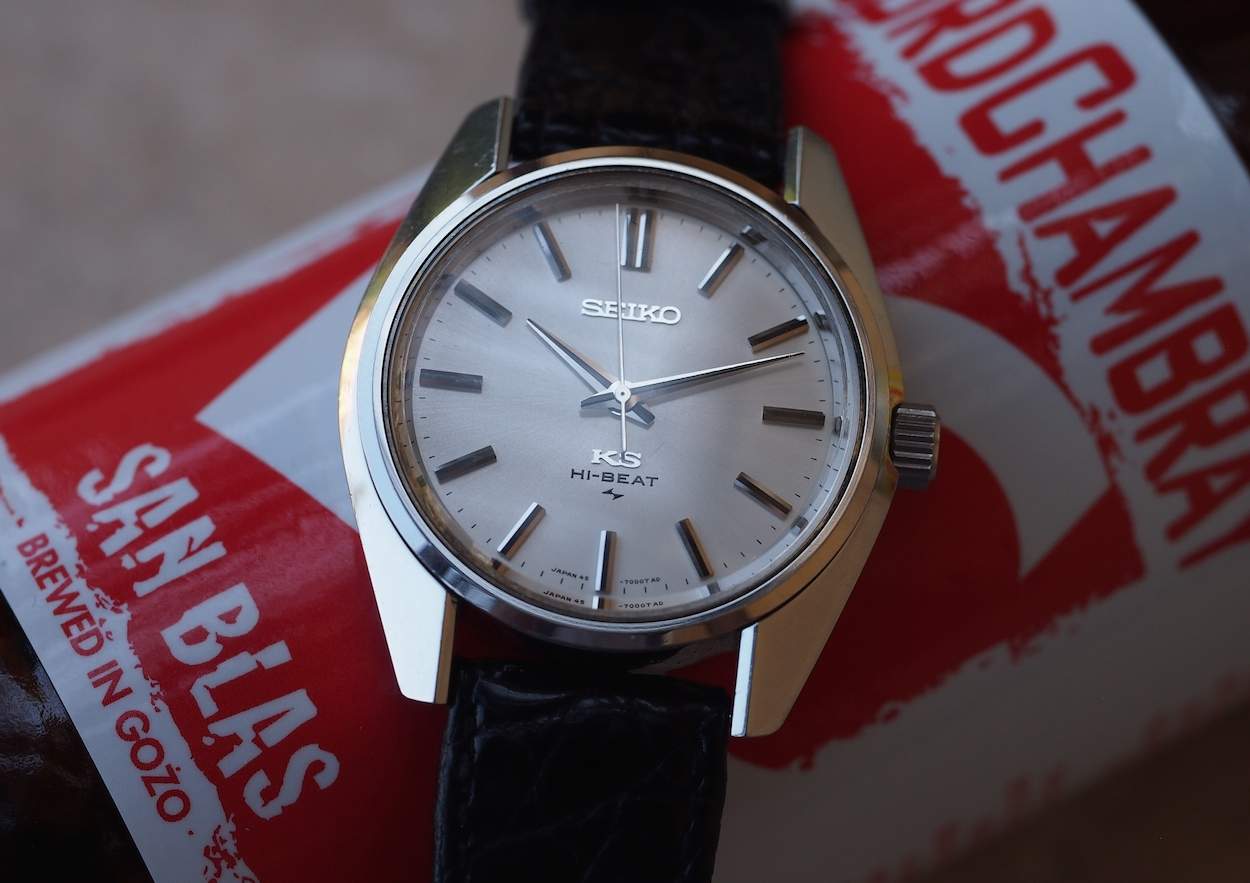 The market for King Seiko is funny; it’s super cultish and pieces are highly collected by Seiko addicts. However, with the general rise in popularity of Seiko in general (modern and vintage), we’ve started to see more and more interest in these pieces along with Grand Seikos. Pricing tends to run in the $400-700 range for the Seiko 45-7001, which is a nice buy for a bit of watch history just before the quartz days. Plus, you’re getting a hand-built, 3-hand movement that easily rivals anything from Switzerland during the era and it’s in a distinctive, yet classic, case. As with all pieces from the era, and especially Seiko, I always look for signs of water entry and delamination on the dial. Finding a well-sorted Seiko 45-7001 can be challenging in that regard and also related to locating a sharp case and case back. Also, you’d be missing out on a little joy if you choose a piece without the original crown. I wouldn’t stress about the buckle, as that’s purely a crapshoot. eBay and the SCWF are good places to look as well as other forums.
The market for King Seiko is funny; it’s super cultish and pieces are highly collected by Seiko addicts. However, with the general rise in popularity of Seiko in general (modern and vintage), we’ve started to see more and more interest in these pieces along with Grand Seikos. Pricing tends to run in the $400-700 range for the Seiko 45-7001, which is a nice buy for a bit of watch history just before the quartz days. Plus, you’re getting a hand-built, 3-hand movement that easily rivals anything from Switzerland during the era and it’s in a distinctive, yet classic, case. As with all pieces from the era, and especially Seiko, I always look for signs of water entry and delamination on the dial. Finding a well-sorted Seiko 45-7001 can be challenging in that regard and also related to locating a sharp case and case back. Also, you’d be missing out on a little joy if you choose a piece without the original crown. I wouldn’t stress about the buckle, as that’s purely a crapshoot. eBay and the SCWF are good places to look as well as other forums.
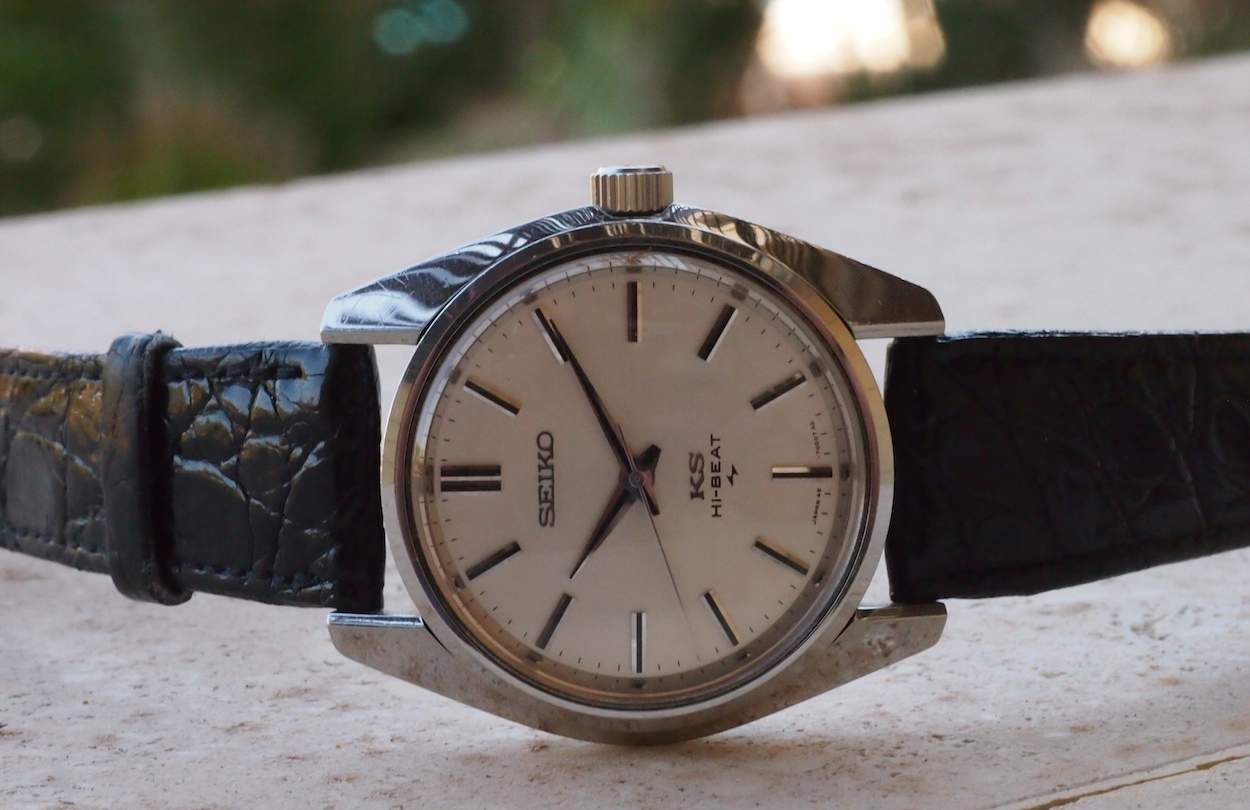 This week’s #TBT was a decided step back into affordable but also featured a watch from a much different genre than the past. Hopefully, the diversity works for you because we’ll be heading down all sorts of different paths in the future. The King Seiko 45-7001 is a gem of a watch and deserves serious consideration if you’re looking to add a piece of history, a classic dress watch or something different from the Japanese powerhouse of a brand. If you’ve seen the common forum posting “I don’t have the need for a dress watch very often but would like to pick up something credible at a decent price”, well, consider this a most suitable answer.
This week’s #TBT was a decided step back into affordable but also featured a watch from a much different genre than the past. Hopefully, the diversity works for you because we’ll be heading down all sorts of different paths in the future. The King Seiko 45-7001 is a gem of a watch and deserves serious consideration if you’re looking to add a piece of history, a classic dress watch or something different from the Japanese powerhouse of a brand. If you’ve seen the common forum posting “I don’t have the need for a dress watch very often but would like to pick up something credible at a decent price”, well, consider this a most suitable answer.

